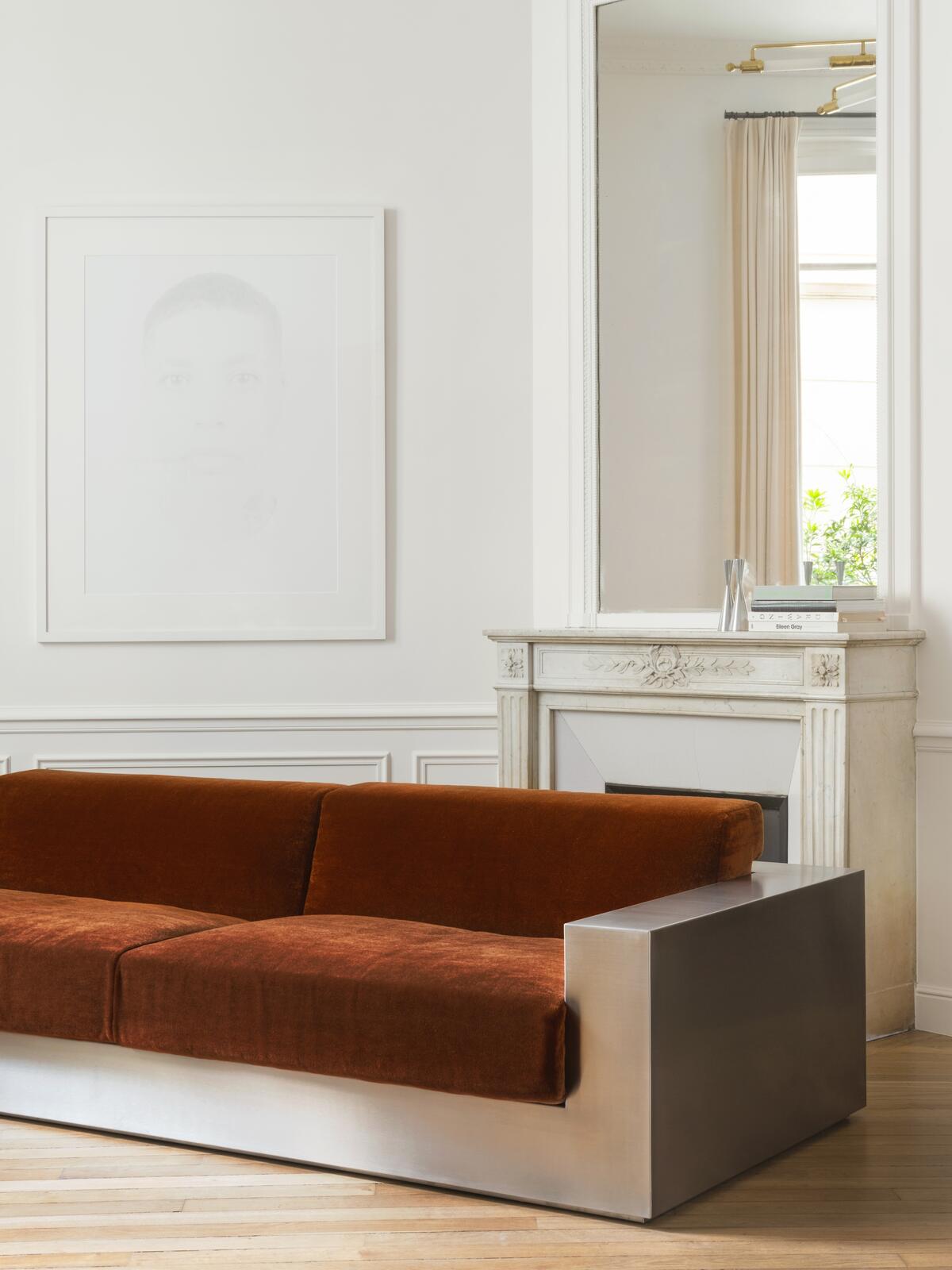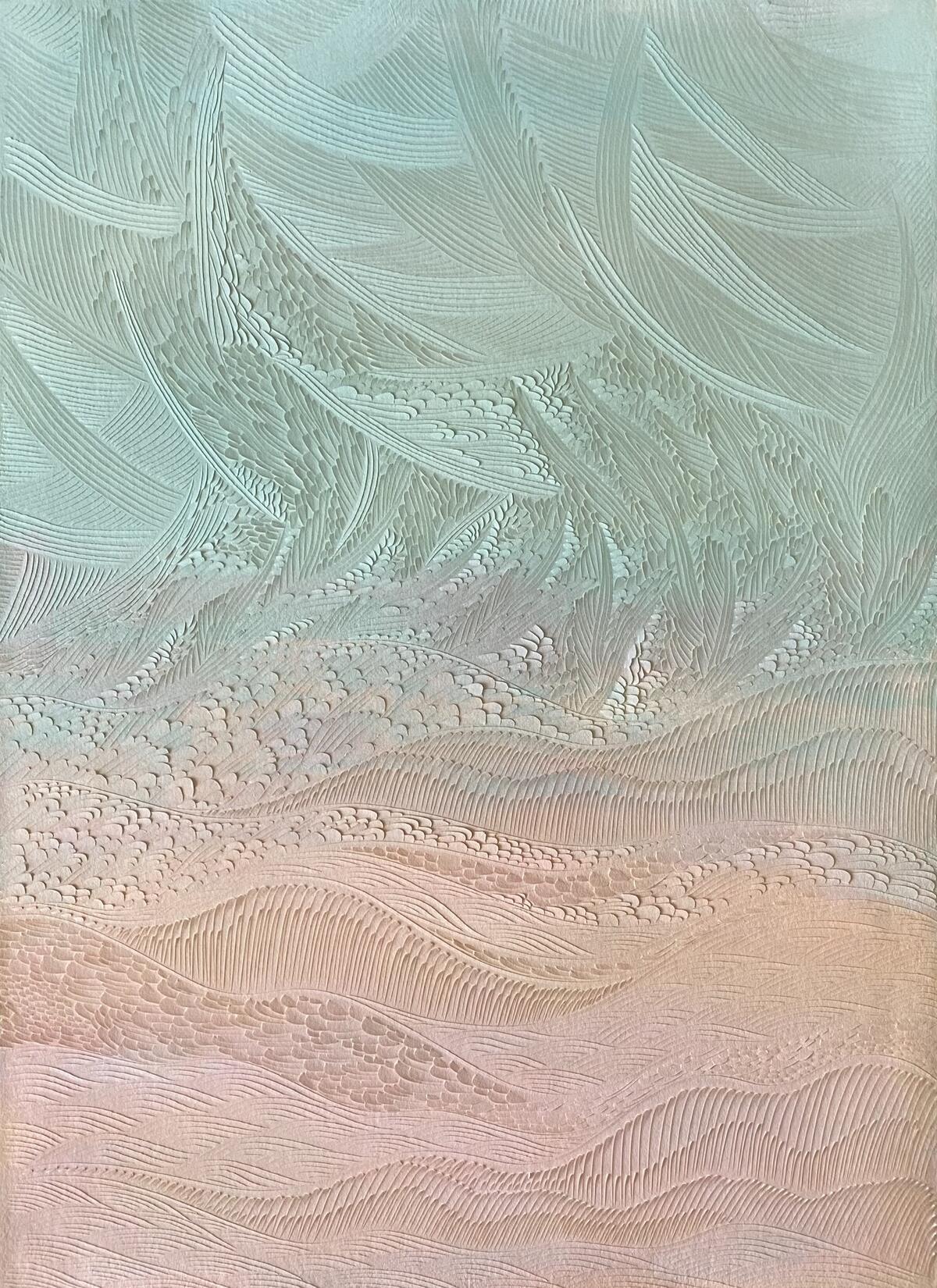When Paris native Olivier Gautschoux moved to the U.S. five years ago, it struck him that an appreciation for his home country wasn’t hard to find. “I was really shocked to see how much French luxury was everywhere in the States, whether it’s fashion, jewelry, wine, food,” he says.
Design? Not so much. “I feel like in our industry—furniture, lighting and accessories—you could find some, but it was not as mature as other sectors,” says Gautschoux. At the time, he led international operations at Holly Hunt, scouting new lines or designers that might succeed in the U.S. Alongside colleague and native New Yorker Nicole Scott, a 17-year Holly Hunt veteran, the pair saw an opportunity to fill the gap.
“Nicole and I already knew there was so much talent in France, and we saw all these people who had never been shown in the States,” says Gautschoux. “There was so much appetite from American designers and clients for French culture, we felt like: ‘Let’s create the bridge between France and America and let’s make them visible in the U.S.’”

This month, the duo launched Etēline, a collective of made-to-order furniture, lighting, accessories and art by French artists and artisans. The lineup of 12 studios and makers ranges from heritage design houses to relative industry newcomers, including glassblowers, carpenters, marble sculptors, bronze casters, upholsterers and metalworkers. While the platform will serve both retail and trade customers (the site lists retail pricing, though designers can register to access a trade discount), its founders expect a majority of sales will go to the latter—a clientele they feel well-equipped to handle.
“Service is really in our DNA, because our background lends itself to service, and we really understand all of the markets in the U.S.,” says Scott. “We were able to come together with our French partners and [allow them to do] what they do really well, which is design, while we service the interior designers at the level they expect from us.”
To that end, they’ve worked to smooth out some of the sticking points that arise when U.S. buyers source from abroad, in part by baking duties, taxes and the cost of international shipping into each piece’s purchase price. On the other side of the equation, they hope to lower the barrier to entry that typically keeps international talents from accessing the U.S. market.
“Though French designers and makers understand that the U.S. market is the number-one market for our industry, they don’t really know how to tackle it,” says Gautschoux. “Sometimes it’s an issue with the culture or the U.S. business model: Should they reach out to the distributor? Should they be trade- or retail-only? Should they have their own space? Should they be in New York, Miami, Chicago, Dallas? It’s so different from Europe, they don’t know where to start.”
Etēline aims to answer those questions by operating with a distribution model through which the company purchases pieces directly from its artisan partners and then handles all of the logistics, from pickup to warehouse or white-glove delivery. This summer, the company will also open a 3,000-square-foot showroom in New York’s Chelsea neighborhood, created in partnership with French architect and designer Hervé Langlais (who is represented by Etēline in the U.S.).
The company isn’t the first to tackle the mission of bringing French design to the American market. London-based e-commerce platform Invisible Collection launched in 2016 with a similar goal, and now hosts about 250 designers of primarily European origins. By contrast, Gautschoux and Scott say they’re intent on keeping Etēline’s roster small. The pair says that if new names are added to the collective, it will most likely be in a category or artistic medium that isn’t currently represented.

That’s a major draw for some of the collective’s artisans, including Anne Féat-Gaiss, a Paris-based artist whose work incorporates precious metals like gold, silver and copper leaf into ancient weaving and paper sculpting techniques. “We are very excited that Etēline is going to open their showroom, and that [when] working with them, we’re not going to drown [among] 1,000 other artists,” she says. “We’re not a number on a website—it’s a human connection.”
For Féat-Gaiss, the move fulfills a long-term goal of moving further into the contract market—a sector that she doesn’t believe she’d be able to access without boots on the ground. “It’s a market that’s hard to work. You have to be there, and you have to go knock on doors and talk to people on a daily basis,” she says. “But if you can break through in the U.S., it’s a stamp of approval for the rest of the markets.”
Another benefit of having a curated group of artisans is being able to tell each maker’s individual story—a quality that’s becoming more important to consumers, according to Gautschoux. “It’s like a restaurant: Back in the ’90s, all the kitchens were closed, and you wouldn’t see what was going on. You would have your plate and voilà,” he says. “Now they break down the walls, and you want to see what’s going on in the kitchen. … [Etēline] is like showing [what happens] behind the scenes, and coming up with one-of-a-kind pieces, in terms of design and making.”
That’s part of the reason why Etēline focused on selecting artisans with unique processes. Take Maison Pouenat, for example—a French heritage company that has been perfecting its metal process to create unique finishes like hammered aluminum, hot-blue aged steel and hot-patinated brass since 1880. Another maker, Roxane Lahidji, worked from an ecological approach to invent a new material called marbled salts: a mineral composite made of 90 percent sea salt, which is then molded into lighting, furniture and art objects.
Aside from Etēline’s New York headquarters, set to open this summer, the collective is eyeing eventual expansion to design markets across the country, with Los Angeles, Miami and Chicago at the top of the list. But for now, they’re fixing their sights on making a debut that will set the tone for bringing a new wave of French design to the U.S.
“Keeping it curated means we can really focus on the design and quality, which is the utmost important thing,” says Scott. “We’re thrilled that we’re able to tell all of their stories.”




























